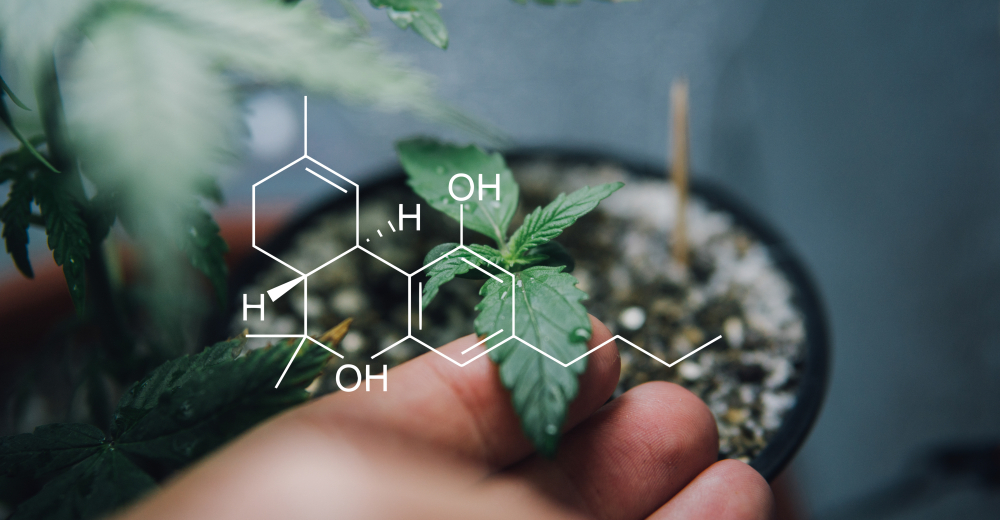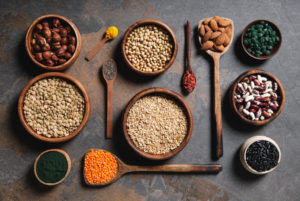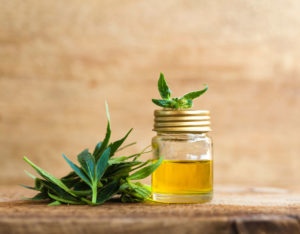All plants contain active compounds called phytochemicals, which protects the plant, helps it to thrive and keep competitors, predators or pathogens in check. These same compounds are what often provide plants with their therapeutic effects and benefits, similarly helping ease symptoms and protect us against diseases.
A special group of phytochemicals, called phytocannabinoids, have the ability to interact directly with the body’s biology through what is known as the endocannabinoid system. Phytocannabinoids are present among many different types of plants, but are most abundantly found in the cannabis plant.
To date, more than a 100 different types of cannabinoids have been identified, with THC and CBD probably the most well-known and researched. But THC and CBD are certainly not the only therapeutically beneficial cannabinoids that have been identified and studied.
Before we explore the five major phytocannabinoids, what they do and the potential therapeutic benefits they have, let’s first go over some basics.
Cannabinoids 101
Simply put, cannabinoids are a class of chemical compound that bind to and interact with the cannabinoid receptors found in our bodies, altering the way neurotransmitters are released in the brain.
The word cannabinoid has become an umbrella term for different types of cannabinoids, ranging from the phytocannabinoids and cannabinoid acids present in plants, to the endocannabinoids produced within the bodies of all vertebrates.
Phytocannabinoids, cannabinoid acids and endocannabinoids are distinctly different, though, each with their own unique set of characteristics and functions.
Endocannabinoids
Endocannabinoids are cannabinoids produced within the body by the endocannabinoid system. Acting as neurotransmitters, their main function is to control and regulate activity in the central nervous system as well as in other biological systems within the body.
Cannabinoid Acids
Cannabinoid acids are what the plant actually synthesises—basically the raw form of phytocannabinoids—with each of the cannabinoid acids yielding a corresponding cannabinoid once heated. Cannabinoid acids do not produce intoxicating or psychoactive effects. They do however have a variety of interesting therapeutic properties, with many of them touted as having antibiotic, anti-inflammatory, antiemetic and neuroprotective properties.
Phytocannabinoids
What most people think of when they hear the word cannabinoid is actually an activated or what is referred to as the decarboxylated form of the cannabinoid acids found in plants. They are produced when the plant material is heated through vaporization, cooking or smoking. For the sake of convenience, we will also refer to these as just cannabinoids. These are the compounds we will be discussing here.
The major Cannabinoids
1. Δ9–tetrahydrocannabinol (THC)
Arguably the most well-known, if not the most infamous of all the cannabinoids, THC is the psychoactive compound that produces the feeling of euphoria associated with cannabis. THC works by binding to the CB1 receptors in the brain, leading to a release of dopamine, which causes alterations in perception, behavior and memory. However, THC has also been found to have many potentially positive, therapeutic properties as well, including the following:
- Pain relief
- Sedative properties
- Anti-inflammatory, antioxidant and antibacterial properties
- Nausea combatant
- Neuroprotectant and neurons regenerative properties
2. Cannabidiol (CBD)
CBD is by far the most researched of the cannabinoids and has shown the most therapeutic potential. That’s because CBD interacts with both the cannabinoid receptors as well as other types of biological targets, potentially explaining why it is anecdotally known to be effective for a wide range of symptoms and diseases. CBD is non-intoxicating, with a mounting body of research showing that it can be helpful with the following:
- Pain relief and inflammation
- Depression, anxiety and other types of mood disorders
- Spasticity and seizures in people suffering from multiple sclerosis and epilepsy
- Reduced tumor growth
3. Cannabigerol (CBG)
CBG is another non-intoxicating cannabinoid that some researchers believe is the building block for all the other cannabinoids. Although there is not much known about it, the few studies that did investigate the therapeutic properties of CBG show that it can:
- Reduce pain and inflammation
- Help with skin disorders such as psoriasis
- Improve motor skills and help reduce the symptoms of neurological diseases such as Huntington’s
- Be a powerful antibacterial
- Promotes bone growth
- Relieves intraocular pressure, reducing the symptoms of glaucoma
4. Cannabichromene (CBC)
CBC is also non-intoxicating, being the second most prevalent cannabinoid found in many cannabis strains. A variety of studies show that CBC has a variety of potential health benefits while also amplifying the entourage effect. Like CBD, CBC appears to work with other receptors throughout the body, which gives it a wide range of potential therapeutic effects that range from:
- Pain and inflammation relief
- Tumour reduction, especially in breast cancer
- Promoting bone growth
- Helping with depression
- Helping with the regeneration of neurons
5. Cannabichromevarin (CBN)
CBN is a mildly psychoactive cannabinoid of which there is usually very little to none present in the fresh plant. Instead, it is produced as a result of the degradation of THC, with the amount of CBN increasing the older the plant material gets. CBN has been shown to work effectively in:
- Aiding with insomnia and helping to induce sleep with 5 mg of CBN having the same sedative power as 10 mg of diazepam
- Relieving pain and inflammation
- Helping to reduce seizures
- Helping to fight bacterial infections
By far not an exhaustive list of cannabinoids identified to date, there are countless other cannabinoid acids, phytocannabinoids and endocannabinoids that are yet to be discovered, isolated and researched. However, the ones we discussed here are the ones we do know some things about, and it seems that the more we find out about them, the more amazing and powerful the various therapeutic effects seem to be. And, whether produced by the body or a plant, these naturally occurring compounds can provide a natural, effective and gentle therapeutic alternative for people who suffer from a wide range of symptoms, conditions and illnesses.




